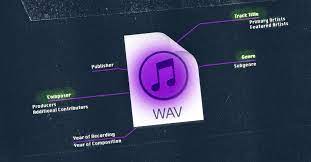What is music metadata, and why is it important?
You may have heard it before. We’ll explain what it is and why it’s important for music distribution.
Metadata makes your music searchable.
It contains all the information you need about a piece of music. Metadata is information embedded in audio files that can be used to identify music.
This includes the track title, artist name and writer, song duration, genre, etc. These extra details are what you will see on music services such as Spotify.
Why is metadata so crucial?
Correct metadata is essential for ensuring that your music is correctly credited. This is also what your royalty payments depend on. You risk that your metadata is incorrect, and you won’t get all the royalties due.
Metadata ensures that your music is correctly mapped on streaming platforms. You have put so much effort into your release strategy and music release strategy. The last thing you want is your song to be posted on someone else’s profile.
Getting big industry deals like sync agreements is easier if your music is correctly credited and easy to identify.
Imagine…
You have sent your music to a major music supervisor hoping for a possible sync deal. Let’s assume it’s for a feature on a new Netflix movie.
In your excitement to get your song heard, you’ve left the file name the way that the sound engineer exported it, so the Netflix big-wig has received a lovely pitch email from you, a great track to boot, but a song with metadata like ‘song-1-v5-master-mix-final’.
A few days later, the music supervisor decided that “yeah, that song was pretty good” and tried to find it again.
They’ve been sent hundreds upon hundreds of songs, and when they search for your name, song title or genre, there is nothing in their music library. Instead, they show lots and lots of generically named songs.
There’s also another problem.
Even if they find your track and decide to use it for placement, they still have to clear and license your music.
They need a certain set of information to be able to track down copyright holders and obtain the permission needed to end the sync agreement. This process would be easy if they had the correct metadata. All the information would be in the audio file information.
They could google you to find the correct information. But that could take several days or even months. Time is money.
Your music will not get lost in the maze of new releases if your metadata is correct. Your chances of success are higher if you have better searchability. Your music sync will be ready if you include contact information and copyright information in your metadata.
Music metadata examples – What do you need to submit?
A handy checklist of music metadata has been created that you can use in your next release.
Artist Name You want them to know you!
Include featured artists and cover artists.
Learn how you can release a cover song if you want to learn more about making money from covers.
Song Name – Duh!
Writer and Composer – This is to protect copyright. Even if the original artwork is already in your portfolio, you can add your name to this section. This is particularly important if the artist name you use is not your legal name.
Producer– This should again be their full legal name.
Copyright year – This usually indicates the year the song was recorded.
Genre– This is just a piece of useful information for supervisors and curators. You can even use it to help platforms such as Spotify create playlists!
ISRC code – You should know what it is to include it! It’s a user identifier that will ensure you get paid correctly if your song is used.
If the track is a rerelease, it is especially important to use the ISRC Code to ensure that stream counts and sales are not lost.
Apple Music, for example, requires metadata consistency throughout its life span. This means that any previous release must have the same metadata (including the ISRC).
You can include BPM, song length, song split (to ensure everyone is properly credited), and track number if the song is part of an EP or album. These are the essentials.

